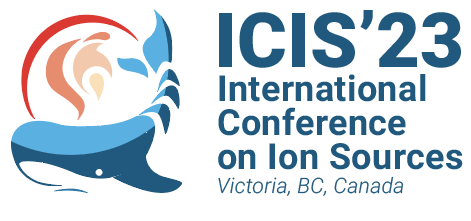Speaker
Description
The CUBE-ECRIS is a recently commissioned permanent magnet electron cyclotron resonance (ECR) ion source developed at the university of Jyväskylä accelerator laboratory. The special features of the new ion source design include an unconventional quadrupole minimum-B magnetic field structure and a slit beam extraction system necessitated by the line-shaped plasma loss fluxes. The 10 GHz CUBE-ECRIS is based on the ARC-ECRIS magnetic field topology, which is theoretically scalable for up to 100 GHz, and represents an intermediate step to develope this concept towards higher frequency operation. Gas mixing and double frequency operation are two widely used methods with conventional ECR ion sources to optimize high charge state ion production. The work presented here demonstrates the applicability of these methods for boosting the CUBE-ECRIS performance. We present the results of an experimental study where these techniques were employed for the production of argon, krypton and xenon ion beams. Oxygen and helium were used as mixing gases and microwave frequencies between 10 and 11 GHz were used for single and double frequency operation. Gas mixing has a strong impact on the high charge state performance of the CUBE-ECRIS. For example, the highest observed charge state increased from 14+ to 19+ for krypton and from 16+ to 23+ for xenon with oxygen gas mixing. Double frequency operation provides an additional performance improvement, for example the currents of argon 9+ and 11+ beams, produced with gas mixing, increased 30% and 100% when the plasma heating was switched from single to double frequency operation at the same total power. The results show that these well-established methods provide improved high charge state performance also with ECR ion sources that are based on quadrupole minimum-B plasma confinement and slit beam extraction.
| Funding Agency | Academy of Finland Project funding (N:o 315855) |
|---|---|
| Email Address | ville.a.toivanen@jyu.fi |
| I have read the Code of Conduct to attend ICIS2023. | Yes |

